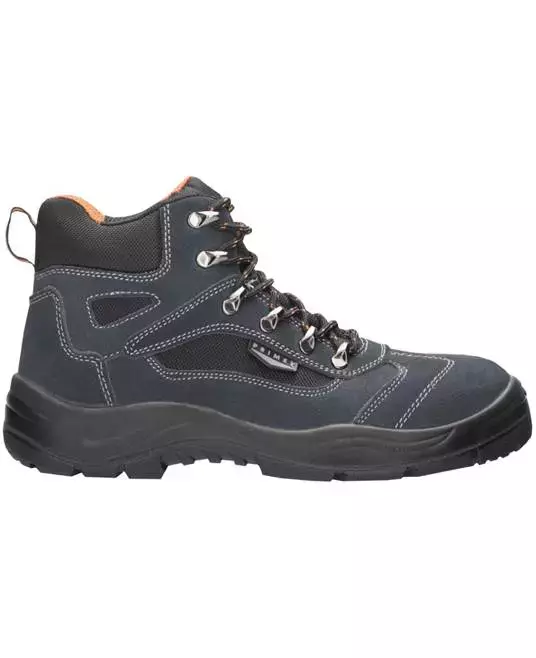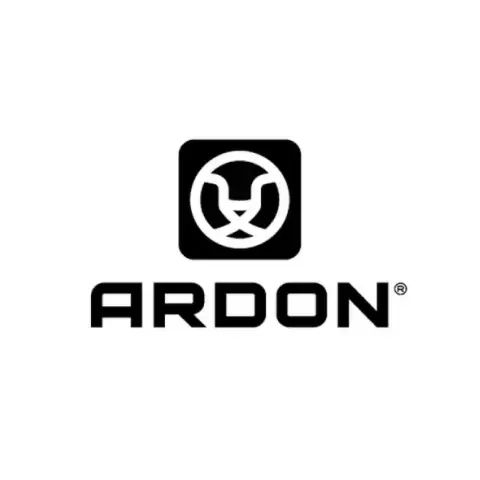Ardon Safety Prime Hightrek S1P Safety Shoes
Ardon Safety
visit storeProduct description
Trekking Footwear
Product Features:
- PU2D outsole
- Resistant to oils, fuels, and contact heat up to 110°C
- Antistatic
- Steel toe cap and insole
- Upper: suede, fabric
- Sole: PU/PU
Technical Details:
- Standard: EN ISO 20345:2011 S1 P SRA
- Weight: 660 g (refers to one shoe from a pair in size 42)
The material used to construct the shoe's bottom surface, affecting slip resistance, durability, chemical resistance, and comfort for different work environments.
Indicates the level of protective features, from basic safety compliance to enhanced protection with additional guards and reinforcements.
Protect your feet from sharp objects and unseen hazards, giving you peace of mind on any job site.
Shock-absorbing soles provide cushioned comfort, reducing impact and foot fatigue for all-day wear.
Anti-slip soles provide superior grip, keeping you safe and steady on challenging surfaces.
Oil-resistant soles ensure secure footing and lasting durability in oily environments.
The color of the shoe's bottom sole, allowing coordination with workplace requirements or personal style preferences.
The interior material that lines the inside of the shoe, affecting comfort, moisture management, breathability, and temperature regulation during wear.
The material used in the protective toe cap, determining the level of impact protection, weight, and suitability for different work environments.
The method used to secure the shoe to your foot, affecting how easy it is to put on and take off.
Indicates whether the shoe is designed for men's, women's, or unisex foot anatomy to ensure proper fit and comfort during wear.
- Impact Resistance
- Electrical Protection
- Slip Resistant
Request a free sample
Test first and buy later. Visit any product page to request your free sample.
Standards and labels
Test results
General Requirements CRThe standard EN ISO 20345:2011 encompasses general requirements for safety footwear to ensure they provide adequate protection in various occupational environments. Rating 'CR' signifies that the footwear has a cut resistant upper ensuring enhanced protection. The test method involves assessing the material's resistance to splitting or cracking under certain conditions, which simulates real-world industrial hazards involving sharp objects or surfaces. Practically, this result ensures that the footwear is suitable for environments where there is a risk of materials splitting or getting caught, thereby providing essential safety benefits to the user.
General Requirements EThe standard EN ISO 20345:2011 encompasses general requirements for safety footwear to ensure they provide adequate protection in various occupational environments. The specification of test result E indicates that the footwear has undergone and successfully met the electrical insulation performance requirements. This specific test assesses footwear's ability to prevent electrical current from passing through the body from the ground, a critical safety feature for those working in environments with electrical hazards. The test involves placing the footwear on a conductive surface and measuring the resistance when a specified voltage is applied, thereby ensuring the footwear provides the necessary protection against electrical hazards. This result is significant for safety footwear, guaranteeing wearer protection in electrical environments and reducing the risk of electrocution, thus contributing to safety standards compliance for occupational footwear in the European market.
General Requirements FOThe standard EN ISO 20345:2011, specifically its General Requirement FO, pertains to footwear containing fuel oil-resistant outsoles. When footwear under this specification successfully meets the FO requirement, it implies that the footwear's outsole has been tested and confirmed to resist degradation due to contact with fuel oil. The test involves exposing the outsole material to fuel oil for a determined period, typically 22 hours, at a controlled temperature of 22°C. This test assesses the change in volume and properties of the outsole following fuel oil exposure by measuring its tensile strength and elongation before and after the exposure. For procurement professionals, a positive FO result indicates that the footwear's outsole will maintain its mechanical performance and integrity when in contact with fuel oil, making it suitable for industries where oil exposure is frequent, providing durability and reliable performance under such conditions.
General Requirements PEN ISO 20345:2011 specifies safety requirements for footwear used in a range of industries to protect wearers from mechanical risks and other workplace hazards. The 'P' designation indicates that the footwear has been tested for penetration resistance, which means it can withstand a force of up to 1100 Newtons from sharp objects like nails. This test is conducted by applying a specified force to a nail or similar sharp object against the sole of the footwear to ensure it cannot penetrate through to the foot. Footwear meeting this requirement is essential for industries where workers are at risk of stepping on sharp objects, such as construction or manufacturing, providing a critical level of protection to the wearer's feet.
General Requirements S1PThe EN ISO 20345:2011 standard sets the benchmark for safety footwear designed to protect users from injuries and accidents in diverse environments. The S1P designation under this standard refers to footwear that has 200 joules toe cap, fully enclosed heel, anti-static protection, energy absorption in the heel, and penetration resistant midsole. The test for the S1P requirement involves ensuring that the footwear has a resistant toe cap tested against a 200-joule impact, electrical resistance testing under defined conditions to confirm anti-static properties, and penetration resistance, where the sole is tested against a force of at least 1100 Newtons. Moreover, the heel region of the footwear is required to absorb energy, thereby reducing impact during wear. These criteria make EN ISO 20345:2011 S1P certified footwear ideal for environments where sharp objects, electric charge, and heavy impact risks are prevalent, thereby guaranteeing a high safety standard for wearers in such conditions.
General Requirements AEN ISO 20345:2011 sets standards for safety footwear intended for professional use, ensuring that such footwear provides adequate protection according to specified safety requirements. Rating A means the footwear has antistatic proterties. The practical implication of an A rating result is that the footwear is certified as having met the necessary conditions for standard professional use, which can reassure procurement professionals of the product's basic safety compliance specific to an industrial or harsh working environment. Such comprehensive testing and certification mean that businesses can ensure worker safety and regulatory compliance when procuring such footwear.
CE Marking is a label that shows a product meets certain safety and environmental standards set by the European Union. To get the CE Marking, a company must test and certify their product meets these standards. CE Marking is required for many products sold in the EU, including electronics, machinery, toys and medical devices. It helps ensure that products are safe for consumers and the environment, and allows for easy trade within the EU.
Ardon Safety delivery terms
Free delivery when you order more than 150,00 € from Ardon Safety
Supplier shipping fee 6,68 €
Brand minimum 130,00 €
41,31 €
Shipping fee is 6,68 € for orders under 150,00 €
Sold in units of one pair
Need larger quantities?
Other products you may like
Recently viewed
Need help?
Get help from our experts
Other products you may like
Similar products you may like
Autonomous sourcing platform
The most efficient way to source and order supplies for your operations
Sourcing
Ordering
List products you’re looking for and we’ll find the best products and prices for you – all for free.
Need help?
Get help from our experts



